Assessment, Accreditation and Strategic Planning
National Survey of Student Engagement - 2006 Campus Results
The National Survey of Student Engagement (NSSE) evaluates the effectiveness of productive student engagement each year by surveying college freshmen and seniors. The NSSE results a summarized across five nationally recognized effective educational practice benchmarks: Level of Academic Challenge, Active & Collaborative Learning, Student-Faculty Interaction, Enriching Educational Experiences, and Supportive Campus Environment. In Spring 2006, more than 331,000 students from among 667colleges and universities participated in NSSE.
Data for Western’s 2006 NSSE results are based on the participation of the 26% of our freshmen and 31% of our seniors who elected to participate in the online national survey.
National Benchmark Comparisons - Longitudinal Analysis 2005-2006
Western Illinois University’s comparative levels of achievement for each of these NSSE benchmarks are determined by assigning a value of 100 to the normative score attained by all participating institutions with our same Carnegie classification. WIU values exceeding the national Carnegie class average are above 100% and those WIU values not reaching the national average are below 100%.
Summary
With results just released to participating institutions nationwide, the National Survey of Student Engagement (NSSE) documents the substantial gains Western Illinois University has made in measures of student engagement related its vision of becoming the leading comprehensive university in the United States. Especially noteworthy are the test results from the Fall 2005 incoming freshmen class, which was the first to take part in Western’s unique First Year Experience (FYE) program. Freshmen showed an improvement in all 5 of the principle NSSE measures of effective educational practice: (1) level of academic challenge, (2) active and collaborative learning, (3) student-faculty interaction, (4) enriching educational experiences, and (5) supportive campus environment. A key component of the FYE program, increasing Student-Faculty Interaction, showed a remarkable 23% improvement, with WIU being one of the higher performing schools nationwide, with a 119% performance rating. In addition, freshmen achieved 17% improvement in Active and Collaborative Learning and 17% improvement in Enriching Educational Experience measures. While the results were not as impressive for Western’s seniors, they too showed improvement in 4 of the 5 major areas, clearly demonstrating that Western’s commitment to Higher Values in Higher Education encompasses the entire realm of undergraduate education, both inside and outside of the classroom.
| Freshmen | Seniors | |||
| Measure of Effective Educational Practice | 2006 Rank | Change vs 2005 |
2006 Rank | Change vs 2005 |
| Level of Academic Challenge | 102% | +10% | 98% | +2% |
| Active and Collaborative Learning | 99% | +17% | 98% | +4% |
| Student-Faculty Interaction | 119% | +23% | 107% | +6% |
| Enriching Educational Experiences | 99% | +16% | 65% | -24% |
| Supportive Campus Environment | 106% | +19% | 106% | +4% |
Western’s comparative score is presented graphically below for each of the 5 effective educational practice benchmarks. Additional reports provide a tabular comparison for each of the considered elements of the five effective educational practice benchmarks, as well as present results by campus and college.
Level of Academic Challenge
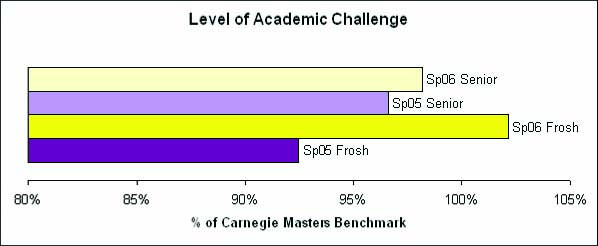
Active and Collaborative Learning
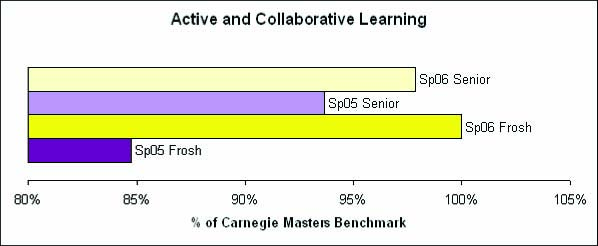
Student-Faculty Interaction
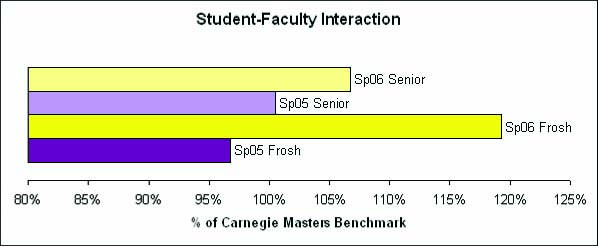
Enriching Educational Experience
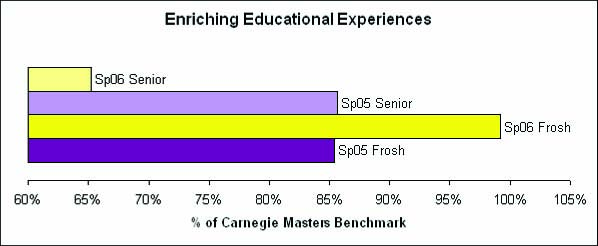
Supportive Campus Environment
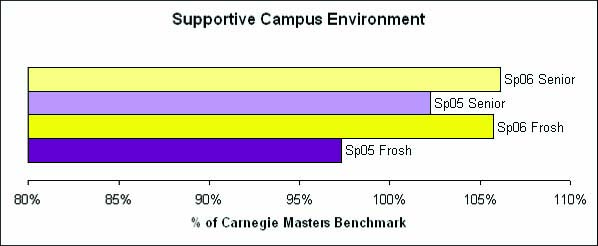
In-Depth Analysis
A more in-depth analysis providing the individual components that comprise each of the 5 NSSE benchmarks of effective educational practices is provided below in PDF format.

Connect with us: